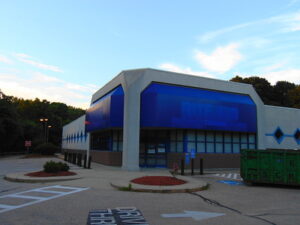The State of Michigan’s Department of Labor and Economic Opportunity recently released the state’s updated employment outlook through 2030. The outlook features a list of 50 of the best employment opportunities. Additionally, the site features a “Pathfinder” tool that identifies schools, fields of study, income data and employment percentages for graduates, both immediately and five years after graduation.
The jobs list is interesting because it features just 3 employment opportunities that require an associate degree. The remainder of the jobs either require a bachelor’s degree, an apprenticeship, or on-the-job experience. Just 6% of the state’s 50 most in-demand jobs require an associate degree. That’s a problem, given that the State of Michigan is pushing hard to send eligible residents to community college.
The other interesting element of the state’s Pathfinder tool is that it uses data to identify programs by institution whose graduates do not earn at least the state’s median income for the same field. These programs should be eliminated for two (or possibly three) reasons. First, the resulting degrees and non-degree certificates don’t out-perform the state’s median income for the field. Second, when prospective students understand that these programs underperform in terms of their income potential, the enrollments in these programs will die.
Third, in the case of non-degree certificate programs, underperforming programs will cost the school its ability to issue federal financial aid to students who signed up to earn a low-wage credential. Unfortunately, the easiest remedy for the school is to convert its underperforming certificate programs to underperforming degree programs, which are not subject to gainful employment rules.
Problem solved!
The discussion still returns to the fact that the state’s data show that few associate degrees have a high-wage potential and long-term employment opportunities.
Employment opportunities should define WCC academic programs’ value
So, again – as a community, why are we plowing tens of millions of dollars annually into a community college whose administration cares little about the employment and earnings potential of its programs? Why are we underwriting an institution with a lower-than 25% graduation rate? What is the point in funding WCC when its graduates earn only three-quarters of what they’ll need to live (by themselves) in Washtenaw County?
Where are the high wage programs? Where is the investment in academics? Why is the Master Plan more concerned with what WCC’s front entrance looks like than with how much WCC’s graduates can make or their employability?
Using the state’s data, I found only one WCC program whose employment rate exceeded 80% both initially and at the five-year mark. Put another way, with one exception, a minimum of 20% of WCC graduates aren’t employed within 90 days of graduation. And in some programs, the 5-year employment numbers have decreased by almost half.
One field (public administration and social service professions) had an initial employment rate of 33% and a five-year employment rate of 0%. Graduates of this degree program can initially expect to make just 63% of the state’s median income for workers in this field. It’s no wonder that no one made it to the five-year mark. This program is a liability. Why is WCC still offering it?
These are existential questions that deserve answers. Unfortunately, the people who should be asking these questions are our elected WCC Trustees. They’re supposed to demand performance from the WCC Administration. Yet, WCC appears to have a large number of certificate and degree programs that produce a negative economic impact for graduates and for Washtenaw County as a whole.
We need better WCC trustees.
Photo Credit: Gene Han , via Flickr






















